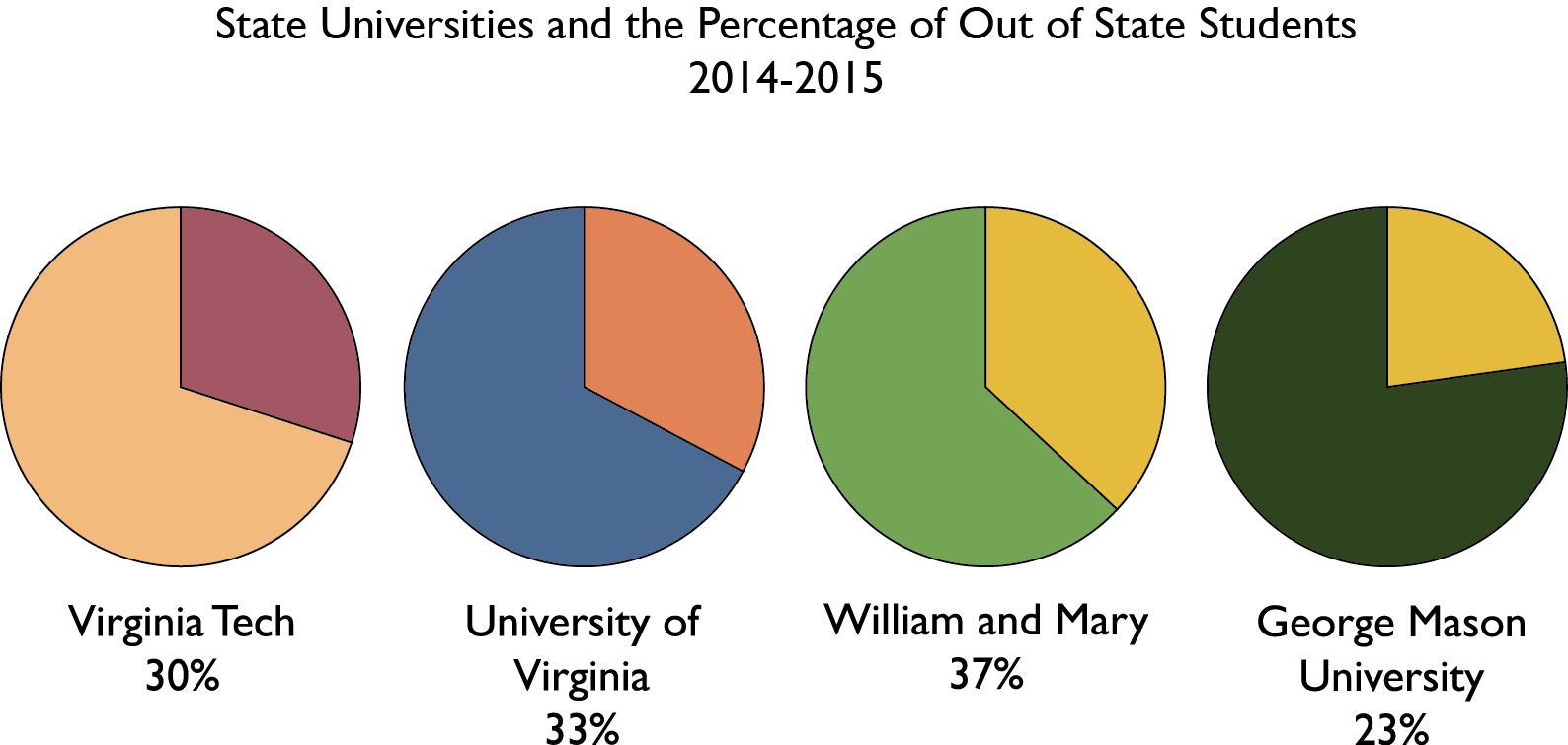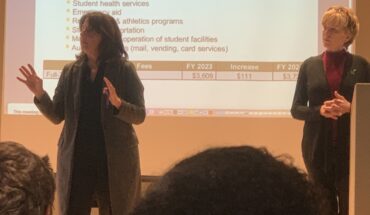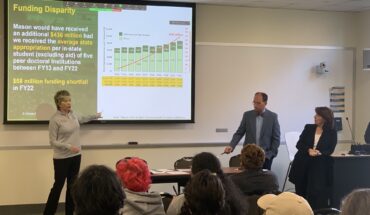This story was originally published in the March 23 print issue.
A Virginia General Assembly bill for a percentage cap on out-of-state students wasn’t passed, again.
The in-state ratio bill “died” in the Committee on Education in February 10. House Bill 2134 proposed that all Virginia universities, expect for Norfolk State University, Virginia State University and the Virginia Military Institute, a requirement to have 75% of its student population from Virginia.
According to Mason’s Director of State Government Relations, Mark Smith, this bill has been brought up in Richmond every year for the past six or seven years. He said this is most likely because legislators get letters from their constituents asking why their son or daughter with a high GPA and plenty of AP courses didn’t get into the University of Virginia, the College of William and Mary or Virginia Tech.
According to the State Council for Higher Education for Virginia, VTech had around a 30% out-of-state student population for the academic year 2014-2015. UVa had around 33% and William and Mary had around 37%. George Mason was lower with around 23%.
All four of these universities are part of the CollegeFactual Top 10 Best Colleges in Virginia. Mason is #7 in the ranking. Smith believes that Mason has become a first choice institution for a lot of first-year students and for transfer students from community colleges.
He also said that the General Assembly was challenged with many other issues and this bill ended up on the back burner. But he thinks this bill could probably be brought up again.
40 percent of the state’s public school population growth will be in Northern Virginia. Loudoun, Arlington, Fairfax and Prince William counties saw a growth of over 5% last year, according to Northern Virginia Magazine. Most of the state’s other counties will see a decrease in its student population, but the concentrated growth in Northern Virginia makes up for that. This could mean that representatives from this area will continue to hear concern from parents about competitive in-state acceptance rates at prestigious Virginia schools.
Even if this bill passed, it would not affect Mason’s admissions process. According to Director of Undergraduate Admissions, Matthew Boyce, the university doesn’t anticipate going past the proposed 25% cap.
“From the Mason perspective, I don’t see it having a major impact on us,” Boyce said. “We continue to grow, but it’s internationally, nationally and locally. I would imagine that it would have more of an impact at other institutions.”
According to the Office of Institutional Research and Reporting, or IRR, Mason has a total population of over 32,000 this spring semester. This includes around 6,000 out-of-state students. Boyce said that this also includes around 100 international students. The numbers for the fall 2014 semester showed that 68 students are enrolled at the Mason global campus in Incheon, Korea.
Although the residential population has been increasing, the Mason Master Plan states that, “The Fairfax campus is and will remain primarily a commuter campus.” There are currently about 6,000 on-campus students.
“There’s no intention to reduce the number of Virginia students in any way, shape or form. We are just trying to continue to grow as a university both nationally and globally,” Boyce said.
But if this bill is ever successful in becoming law, that could mean an increase on in-state tuition, especially if there is less state financial aid to universities. Boyce said that a decision to raise tuition would be up to each school’s Board of Visitors.
“The truth of the matter is that out of state students bring in a higher tuition base, so mathematically it could be [possible]. I guess the bottom line it’s just pure math,” he said.
Currently, Mason’s in-state and full-time student’s tuition for one semester is around $5,000. The full-time out-of-state students pay over double at around $15,000, according to the IRR.
Smith said that he does monitor these types of bills, but he’s more concerned with other issues like campus sexual assault, faculty pay raises and financial aid. According to The Office of Government and Community Relations website, they track VA bills on university curriculum, enrollment, finance, legal issues, students and also K-12 education and regional interest.
For the final budget compromise for fiscal year 2015-2016, Mason received an additional $950,000 in state aid. According to House Bill 1400, the university’s total in aid is around $907,000,000 for 2015 and around $930,000,000 for 2016. This includes funding for auxiliary enterprises, student financial assistance, educational and general programs and financial assistance for educational and general services.
“These are the mountains we’re trying to move,” Smith said.
The next Virginia legislative session will begin on Wednesday, April 15.
Graphic Credit: Walter Martinez
Photo Credit: ensign_beedrill. no changes made.




